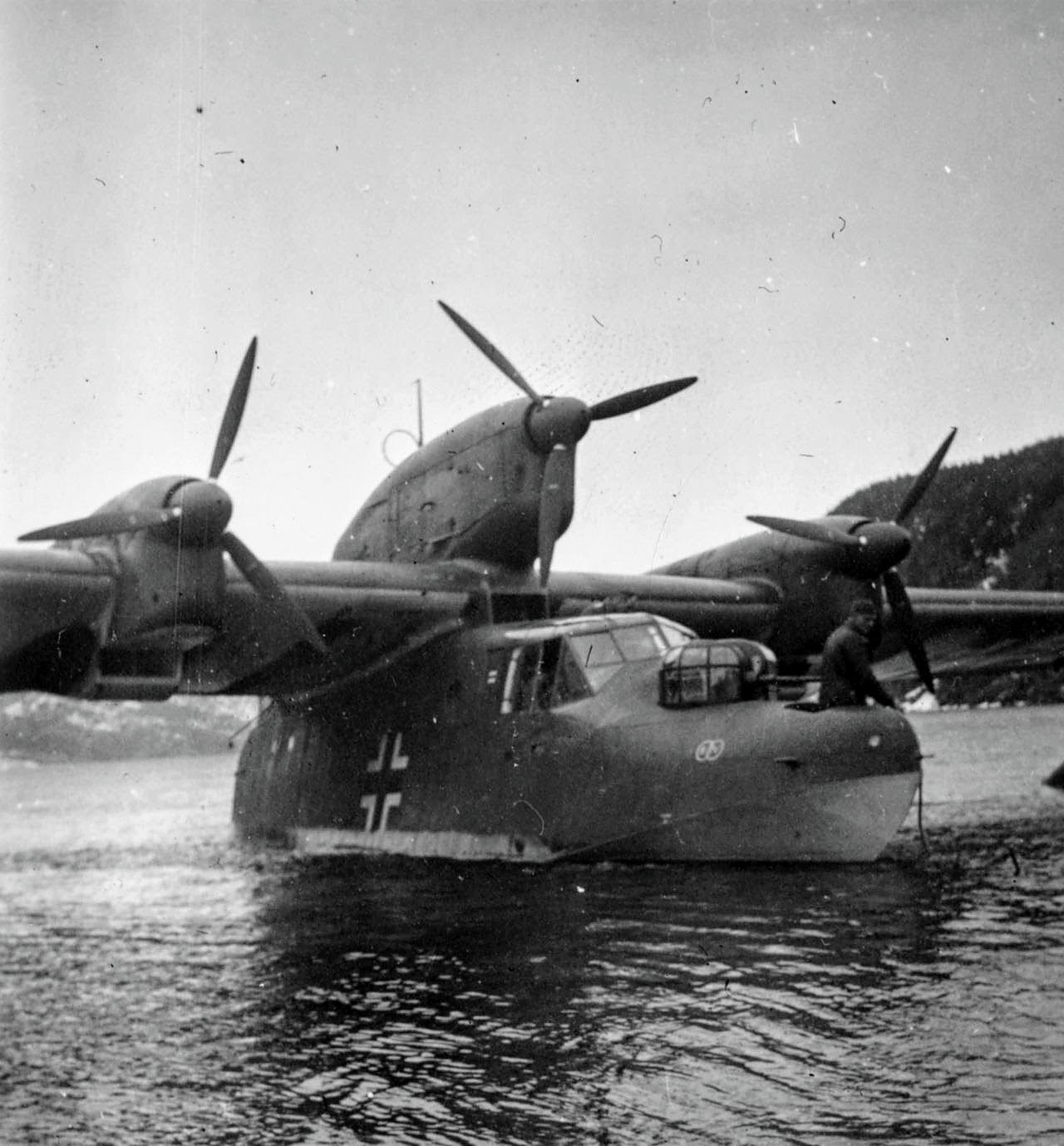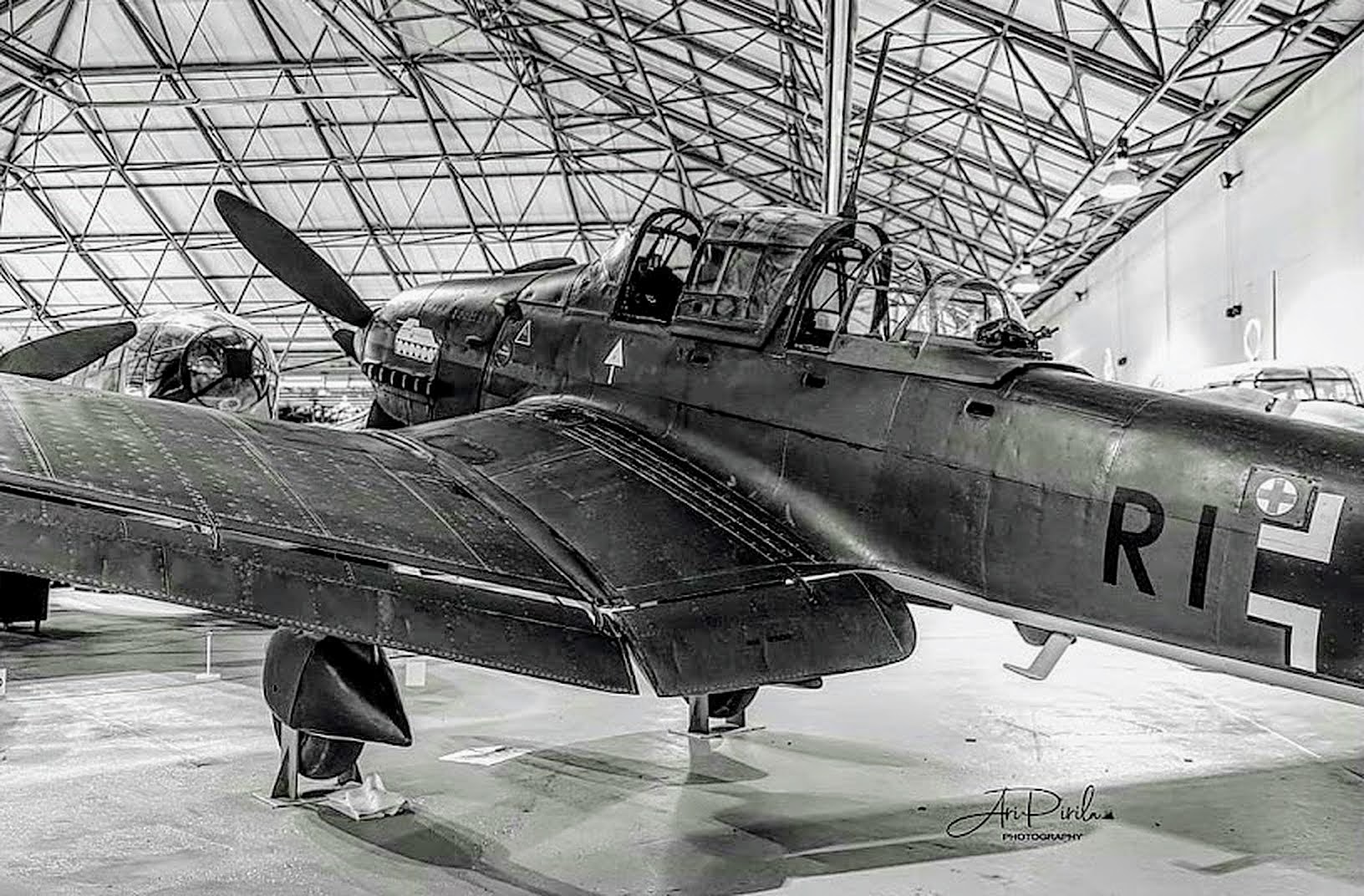Friday, 30 April 2021
Tuesday, 27 April 2021
Junkers Ju 88 A-1 Werknummer.
Junkers Ju 88 A-1 Werknummer 0880119, coded U4+TK, abandoned on frozen Jonsvatnet Lake, near Trondheim, Norway, April 1940. The aircraft fell into the lake, along with other German aircraft, and was later recovered in 2003, and is under restoration at the Norweigan Armed Forces Aircraft Collection.
Sunday, 25 April 2021
Friday, 23 April 2021
Thursday, 22 April 2021
Wednesday, 21 April 2021
Sunday, 18 April 2021
Friday, 16 April 2021
Consolidated R2Y "Liberator-Liner". Designed to carry Navy personnel/cargo to far-flung bases, but was rejected in favor of conventional transports. It was also leased by Consolidated to American Airlines. new fuselage designed for the transport role, the wings taken from the B-24 Liberator and the tail taken from the PB4Y Privateer. This was the only R2Y ever built, as the type didn't enter production.
Wednesday, 14 April 2021
The Tupolev Tu-160. NATO reporting name: Blackjack) is a supersonic, variable-sweep wing heavy strategic bomber designed by the Tupolev Design Bureau in the Soviet Union in the 1970s. It is the largest and heaviest Mach 2+ supersonic military aircraft ever built and next to the experimental XB-70 Valkyrie in overall length. As of 2021, it is the largest and heaviest combat aircraft, the fastest bomber in use and the largest and heaviest variable-sweep wing airplane ever flown.
Tuesday, 13 April 2021
Monday, 12 April 2021
Sunday, 11 April 2021
Victor HP-80 (HP-80 Victor).
Was a tactical nuclear bomber of the RAF. It was a strategic bomber developed by Handley Page as one of the British Air Force's V-series bombers, a large strategic bomber that first flew on December 24, 1952. After the success of the Halifax bomber, which was active in World War II, Handley Page, considered a new bomber, and began developing Victor from 1947, in accordance with official regulation B-35/46, and first announced a design called HP-75. HP-80 which was finally selected. This design aimed at securing stability and extending the cruising distance when flying at high speeds at high altitudes by adopting a crescent-shaped main wing. The engine was placed under the main wing like a large British bomber at the time, and the horizontal tail wing was installed above the vertical tail wing. The prototype HP-80 WB771 first flew on December 24, 1952, and after undergoing various tests, it was deployed to the unit from April 1958, and was active as a bomber until 1968. However, from 1965, some aircraft were converted into aerial tankers and operated until 1993. The total number of production units is 84 units, the smallest among the V series, but it has been in operation for the longest time. The engine was equipped with 4 Conway 201 axial turbojet engines with 9,344 kg thrust developed by Rolls-Royce, and the armament could carry a total of 15,890 kg of various bombs including 4 nuclear bombs and 35 normal bombs of 454 kg. have. In addition to the first mass-produced B1, the electronic equipment reinforced B1A, the B2 with extended main wings and enhanced engine and electronic equipment, the B2R with improved electronic equipment of the B2, and the K1 and K1A with converted B1 and B1A into air tankers In particular, the K2 air tanker belonging to the 55th Squadron of the British Air Force participated in the Gulf War in 1991 and completed the aerial refueling operation.





















































.jpg)